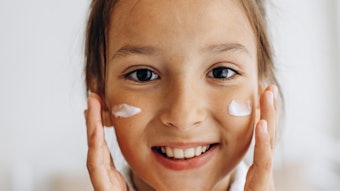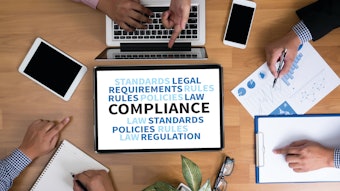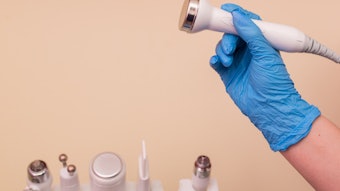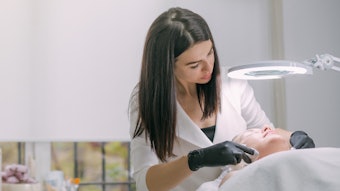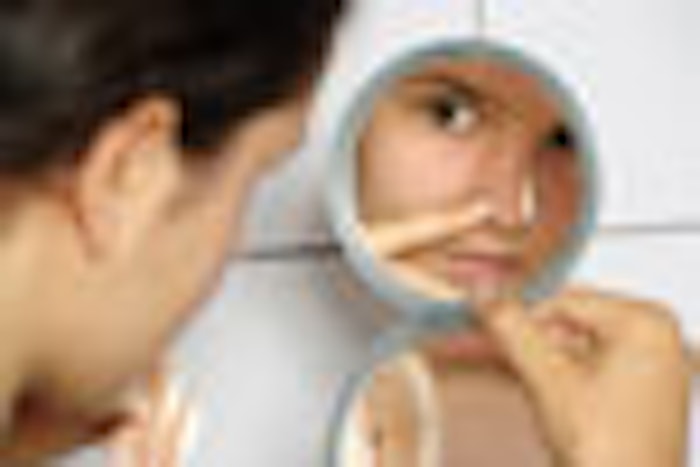
The U.S. Food and Drug Administration (FDA) announced final guidance for industry on over-the-counter (OTC) topical acne drug products, which was initially proposed in 1985.
In summary, the guidance:
- Requires labeling on benzoyl peroxide products, stating that they should be used with sunscreen.
- Adds benzoyl peroxide as generally recognized as safe and effective active ingredient in OTC topical acne drug products.
- Outlines new warnings (i.e., the products should not be used on broken skin and warnings about potential skin irritation).
- Revises labeling requirements for all OTC topical acne drug products, to ensure consistency with the standardized Drug Facts formatting and requirements.
- Permits the use of single and combinations of active ingredients.
SkinInc.com: Could you explain the new U.S. Food and Drug Administration (FDA) over-the-counter acne product guidelines and spell out what it means for consumers?
Jeffrey Dover, MD, past president of the American Society for Dermatologic Surgery (ASDS): It is important to use benzoyl peroxide with sunscreen because benzoyl peroxide is photosensitive. Fair skin individuals are particularly at risk.
No matter what your skin type or how your body reacts to the sun, you should always wear sunscreen with an SPF of 30 or higher. The ASDS recommends applying about one ounce (the size of a shot glass) of sunscreen to cover your entire body and reapply every two to three hours spent outdoors.
The guidelines do not impact the selection process or help in selecting the right benzoyl peroxide product. Most importantly they confirm just how effective benzoyl peroxide is for acne.
SkinInc: What should spa and skin care professionals know about the new guidelines?
JD, MD: All forms of benzoyl peroxide work ... creams, gels and washes. It’s best to use the product at least once a day and be careful not to overuse it to avoid irritation. In addition, it works particularly well in combination with tretinoin and topical antibiotics.
In addition, the ASDS offers the following do's and don’ts for managing acne:
Do's
- Follow all directions for prescribed medications. Laser treatments and oral medications that fight bacteria and lighten excessive oil production are a few ways to phase out blemishes. However, in order for them to be effective, it is important for clients to maintain an appropriate skin regimen, which includes following directions and schedules laid out by a physician or skin care professional. Be patient: It may be six to eight weeks before you see improvements with prescription or over-the-counter remedies.
- Eat a balanced diet: Research shows there is no direct link between eating greasy or sugary foods (including chocolate) and breakouts. However, food allergies may trigger acne for certain people. In that case, avoiding such foods may help to reduce pimples. Also, living a healthy lifestyle, which includes a balanced diet, exercise and stress management, will really help your skin.
- Relax!: The hormone that the body produces in response to stress is a known acne trigger. It will not make your clients get acne; that is determined by their genes, but it can cause a flareup. So, try to help clients develop techniques to help manage stress and avoid last minute deadlines as this frequently makes your acne worse.
- Choose oil-free cosmetics: When clients choose cosmetics, it’s important to find the right kind for their specific skin type. Look for the words "noncomedogenic" on the label; choosing products that are oil-free and won’t clog pores will help prevent future problems. Some concealers even contain benzoyl peroxide, which help to fight acne while also disguising it.
Don’ts
- Don’t fight acne alone: If your clients have tried to get rid of acne on their own and its just not getting the job done, get help. A skin care professional or dermatologic surgeon can help to get you on the road to clearer skin.
- Don’t scrub: Many people associate acne with a dirty face, so they scrub their faces with harsh soaps that sometimes contain irritating detergents that can increase breakouts. While washing does help to unclog pores, suggest that your clients wash their faces twice a day using a mild soap and water, and pat dry.
- Don’t pop pimples: While “popping” a pimple may be a quick fix, it actually increases the chance of further infection. Squeezing pimples actually pushes bacteria further into pores, which causes redness and swelling and sometimes even permanent scarring.
- Don’t let scars get you down: Acne scarring can be emotionally devastating. Fortunately, treatment options continue to evolve. In fact, a study in the journal, Dermatologic Surgery, confirmed the effectiveness of treating acne scars with serial high-concentration trichloroacetic acid. This new nonsurgical technique improved both depth and appearance of acne scars.

